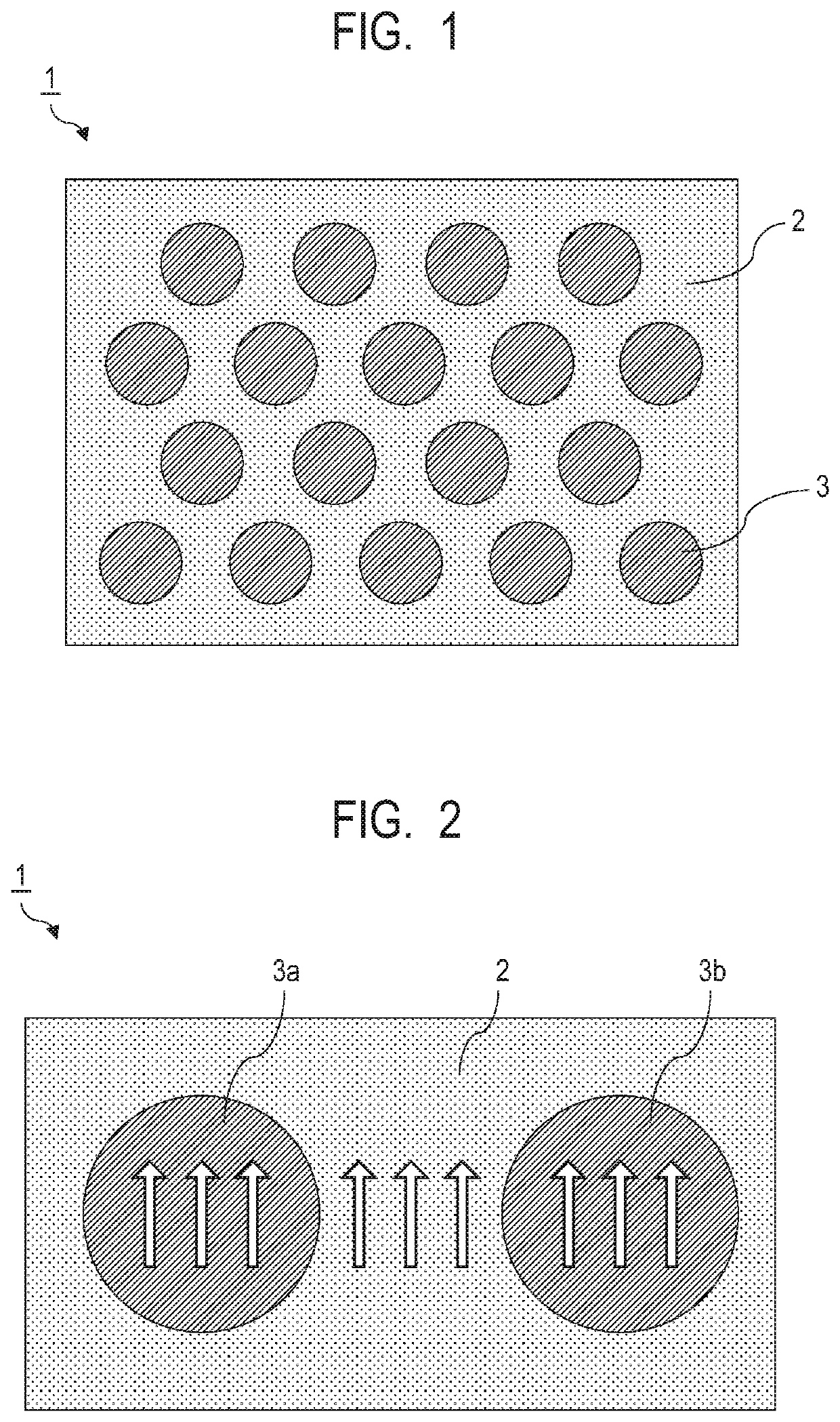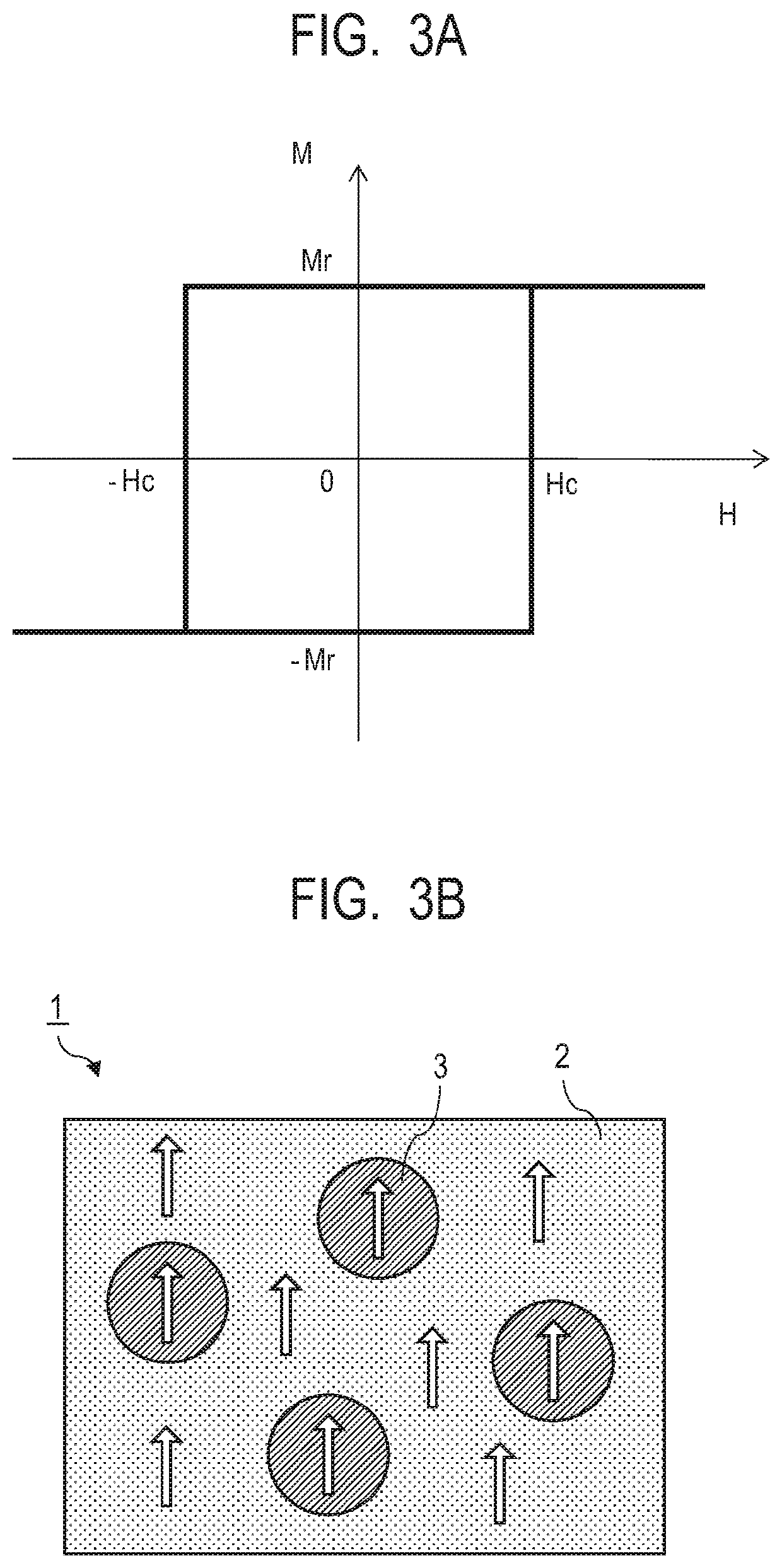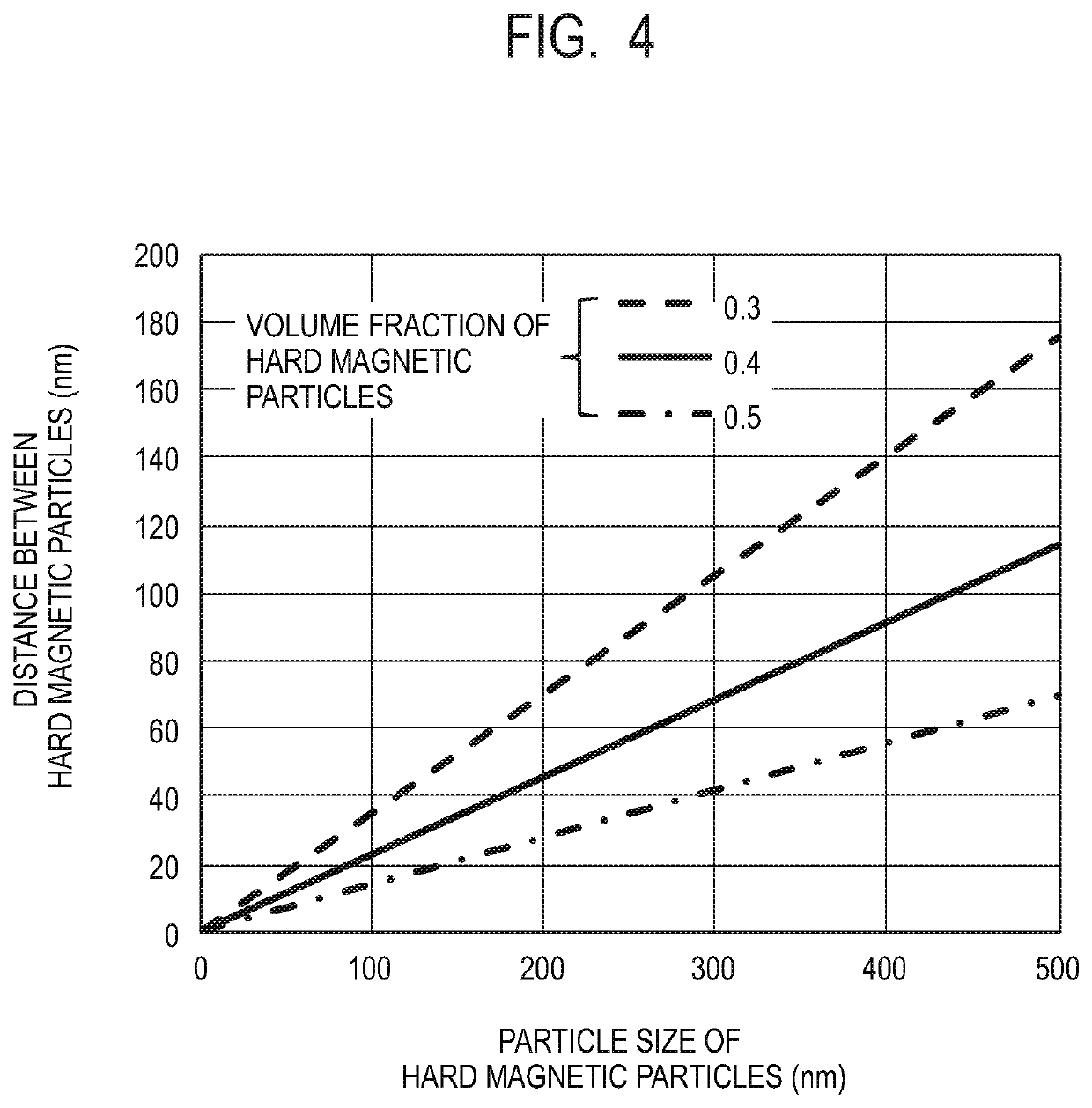Composite magnetic material, magnet comprising the material, motor using the magnet, and method of manufacturing the composite magnetic material
a composite magnetic material and magnet technology, applied in the direction of magnetic materials, magnetic circuits characterised by magnetic materials, magnetic bodies, etc., can solve the problems of rare metals of rare earth elements, uneven distribution of earth's magnetic properties, high cost, etc., and achieve the nano-composite magnet having sufficiently high magnetic properties. the goal of the patent literature 1 is to achieve the effect of nano-composite magnets, the optimization of the particle size of hard magnetic particles and the distance between hard magnetic particles
- Summary
- Abstract
- Description
- Claims
- Application Information
AI Technical Summary
Benefits of technology
Problems solved by technology
Method used
Image
Examples
first embodiment
[0038](Structure of Composite Magnetic Material)
[0039]A composite magnetic material according to the present embodiment has a fine mixed structure in which two phases, that is, a phase of a soft magnetic material (soft magnetic phase) and a phase of a hard magnetic material (hard magnetic particles) are present adjacent to each other on the nm (nanometer) order. Having such a fine mixed structure makes it possible to cause an exchange coupling action to act between the soft magnetic phase and the hard magnetic particles. The exchange coupling action acting between the soft magnetic phase and the hard magnetic particles allows the magnetization switching of the soft magnetic phase to be suppressed by the magnetization of the exchange coupled hard magnetic particles when a magnetic switching field is applied. At this time, the magnetization curve behaves as if the soft magnetic phase and the hard magnetic particles are integrally a single-phase magnet due to the exchange coupling acti...
second embodiment
[0106]FIGS. 11A to 11C are diagrams illustrating time t responses of the revolutions per minute RPM of the motor. This is a driving sequence that controls the voltage⋅current of the coil of the motor so as to achieve a response as illustrated in FIG. 11A. Such a driving sequence is set in a sequencer that drives such a motor. The configuration including such a sequencer and such a motor is referred to as a motor unit. The revolutions per minute start increasing along with the start of drive, reaches specified revolutions per minute Rp after rise time (activation time) t1. The state of the revolutions per minute Rp is maintained for time t2. The revolutions per minute decreases to zero and the motor stops after fall time t3. During the time until the motor stops from the start of rotation (t1+t2+t3) or the time until the motor reaches and maintains a constant revolutions per minute (t1+t2), it is desirable that a ratio of the duration of the rise time t1 or the fall time t3, or the t...
third embodiment
[0111]The magnet of the present invention is effective in that the weight of the motor itself can be reduced, even when the magnet is provided in a fixed part (stator part) besides a moving part (rotor part) of the motor.
[0112]FIG. 13 is a graph illustrating a ratio of the weight of the magnet in a motor and a reduction rate of the weight of the motor itself. Three lines in FIG. 13 indicate cases where the ratios Rρ(%) of the specific gravities of a neodymium magnet, which is Comparative Example, and the magnet of the present invention were calculated as reduction rates in weight using Formula (6) and values Rρ of Formula 6 were 10%, 12%, 14%, respectively:
Rρ=(1−the specific gravity of magnet of the present invention / the specific gravity of the neodymium magnet)×100 Formula (6)
[0113]These are obtained by fabricating composite magnetic materials with the volume fractions of the hard magnetic particles set to 0.45, 0.40, 0.35, respectively, as illustrated in FIG. 6C, and setting the ...
PUM
| Property | Measurement | Unit |
|---|---|---|
| particle size | aaaaa | aaaaa |
| average distance | aaaaa | aaaaa |
| volume fraction | aaaaa | aaaaa |
Abstract
Description
Claims
Application Information
 Login to View More
Login to View More - Generate Ideas
- Intellectual Property
- Life Sciences
- Materials
- Tech Scout
- Unparalleled Data Quality
- Higher Quality Content
- 60% Fewer Hallucinations
Browse by: Latest US Patents, China's latest patents, Technical Efficacy Thesaurus, Application Domain, Technology Topic, Popular Technical Reports.
© 2025 PatSnap. All rights reserved.Legal|Privacy policy|Modern Slavery Act Transparency Statement|Sitemap|About US| Contact US: help@patsnap.com



